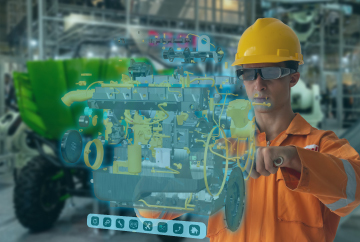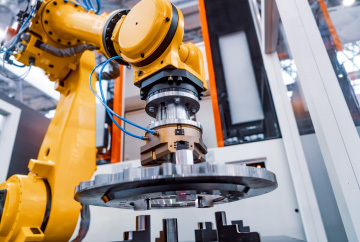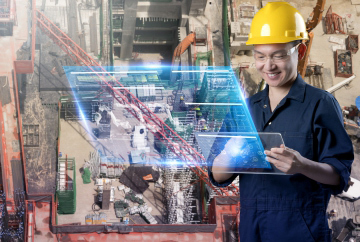While the technology is relatively new and uses modern tech chops, such as AI (artificial intelligence), AR (augmented reality), VR (virtual reality), and IoT (Internet of Things), such a massive growth has rarely been seen. A lot of industries are striving hard to teach it for their benefit. But very few sectors would benefit from it as much as the manufacturing landscape.
This article walks you through the basics of digital twins and their benefits for the manufacturing sector.
What is Digital Twin Technology and How it Benefits Manufacturing in the Industry 4.0 Era?
Depending on the use cases, there have been a plethora of definitions of the digital twin. In contrast, some define it as a sensor-enabled digital replica of a physical object used for simulating the object as if in the real world. In contrast, others define it as an integrated model of an as-built product that presents all the manufacturing issues with an item and can be modified to keep it in line with the actual asset's present condition.
In reality, a digital twin is an adaptable digital profile of the past and current behavior of a physical object or process that brings both the physical and digital worlds together to optimize business performance. It uses a plethora of real-time, real-world, and cumulative data management across many data points to create a flexible and evolving digital profile that can be used for designing, upgrading, or repairing purposes.
What Is a Digital Twin in Manufacturing?
While the concept of the digital twin is barely anything that we haven't heard before, the advancement in the involved factors, specifically technology, has led to people renewing their focus on it for a plethora of reasons.
As for the manufacturing sector, the digital twin companies can collaborate with OEM players to help them digitally plot a physical object, such as heavy machinery. It can help them cut downtime and resources required for assembly, installation, and validating their rich resources. It does so by producing a digital twin model as-built, as-designed, and as-maintained version of the physical asset.
What Are Enabling Technologies for Digital Twin?
The digital twin can safely be regarded as the literal meaning of digital transformation. Like many Industry 4.0 innovations, AI algorithms form the base of the digital twin. In addition, IIoT (Industrial IoT), actuators, and data analytics are crucial for its success.
The process of creating a digital twin starts with people, usually, experts in applied mathematics or data science, looking to deduce and congregate the physics and operational data of a physical object or system. They then use the findings to develop a simulation-based mathematical model capable of replicating the original. For this, they fit sensors, specifically IIoT products, to receive data from the source. They then use it to simulate the happenings in the digital twin in real-time.
Digital twins receive inputs about what is happening to the physical object at any time via actuators. These indicate if the action must be warranted and requires human intervention via 3D rendering, intuitive tables, or a dashboard.
Depending on your use case, you can create a digital twin to offer feedback or act as a prototype to create something along the same lines.
What Challenges Do Digital Twin Solve
Industry 4.0 has had a significant impact on the way Manufacturing takes place. Combining mechatronic technologies seamlessly with AI, ML, IIoT, and data management has already shaken Manufacturing SOPs. Furthermore, the inculcation of the digital twin technology further enables manufacturers to implement complex multi-disciplinary processes backed by the latest technologies around them.
The amalgamation of physical and digital worlds and the presence of superior automation abilities has meant that the digital twin is already solving many issues that hinder the seamless growth of Manufacturing as a sector. Examples include product lifestyle extension, holistic Manufacturing, process improvements, and rapid prototyping backed by big data and analytics. Essentially, a digital twin solves a problem virtually before it occurs in the real world, which is a boon for a capital-intensive sector like Manufacturing.
Digital Twin Advantages and Disadvantages
The phenomenal growth of digital twins has meant that it has become the center of attraction and is being looked at as the next big thing when Industry 4.0 sets its foot in totality. Companies that fail to adapt will fall behind in the race, and even those in the race will have to tackle the set of challenges it poses.
Benefits of Digital Twin in Manufacturing
Here are the benefits of digital twins in the manufacturing world –





